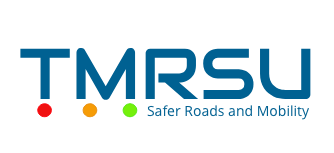Traffic Management and Road Safety Unit

Who we are?
The Traffic Management and Road Safety Unit (TMRSU) is responsible for ensuring that the road system efficiently meets the economic needs of the country and is safe for all road users.
The organization's technical cadre is composed of about 30 engineers and technicians, dedicated to the cause of making the movements of people and goods, from a place to another, as efficient and safe as possible.
What we do?
Major responsibilities of the TMRSU include:
- Maximizing road safety through engineering measures such as traffic calming and speed management as well as through Education and Training programs (ETP) and mass media sensitization campaigns;
- Building and maintaining a comprehensive injury road crash database with the Road Crash Data Management system;
- Ensuing traffic fluidity through various traffic control measures such as traffic lights, traffic signs, road markings and parking restrictions; and
- Advising other ministries and departments on traffic and safety related matters including development controls.
Why we do what we do?
On average, about 145 road traffic fatalities are reported annually in Mauritius: - 139 in 2015, 144 in 2016, 157 in 2017, 143 in 2018 and 144 in 2019.
This corresponds to a fatality rate of 3 fatalities per 10,000 vehicles or about 13 fatalities per 100,000 inhabitants. In 2019, most of the fatal victims were riders and pillion riders of motorised two wheelers (40%) pedestrians (24%) followed by drivers (17%) passengers (14%), and pedal cyclist (6%). In other words, the vulnerable road users (riders of two wheelers and pedestrians) account for more than half (64%) of the fatalities.
In an African perspective the road safety situation in Mauritius is better than in many countries. However, in comparison with the best performing developed countries (UK, Sweden and Netherlands), Mauritius lags behind. Mauritian road crash rate is three times higher than that of European best performing countries that are at 1 fatality per 10,000 vehicles.
If nothing drastic is done to address the road safety problem, road crashes together with its huge economic costs to society have the potential to reverse the gains so far achieved in both economic and human capital development.
Coordinated Adaptive Traffic Control System (CATCS)
Currently all traffic signal installation in Mauritius operates on a single timing plan. In that, regardless of the change in traffic demand at the intersection, the traffic signals provide the same fixed amount of green times. This type of traffic signal operation is very inefficient and results in traffic congestion during peak periods.
The Coordinated Adaptive Traffic Control System (CATCS) will improve the efficiency of the traffic signal operations by automatically adjusting green times based on actual traffic demand.
The traffic signal equipment will also be remotely connected to the main control room at the TMRSU to monitor the health of the system and intervene on its programming and maintenance.
The benefits of the Coordinated Adaptive Traffic Signals include:
- reducing travel time and stop frequency,
- reducing the number of rear-end collisions,
- increasing customer satisfaction,
- reducing the costs of congestion thereby saving fuel and time, and
- reducing vehicle emissions
- allowing relevant traffic information (such as journey time and road safety information) to be conveyed using the variable message sign system.
Traffic Modelling Unit
The TMRSU has set up a Traffic Modelling Unit (TMU) with a view to support strategic level decision making and long term planning. With the use of dedicated software including PTV VISUM/VISSIM, the TMU will be:
- carrying traffic/transport modelling exercises in view of finding measures to minimise the impact of traffic congestion along major arterial roads;
- assessing the strategic justification for major transport infrastructure projects;
- assessing the impacts of infrastructure developments and the associated intensity of land use development on the surrounding road network; and
- providing the means for the on-going development of procedures to quantitatively test and evaluate transport initiatives and policies.
How to contact us?
Director: Mr H. Sungkur
Hours: Monday - Friday: 8.45 am – 4.00 pm
Postal address: Samlo Tower, Aurellie Feillafe Street, Port Louis
Email: tmrsu@govmu.org
Phone: 210 5477
Fax: 2110075
